Related Tags
From Voboam to Page: The epochal renaissance of the multi-neck guitar
When Jimmy Page took to the stage rocking his double-necked EDS-1275 in 1971, it might have felt like a new era of rock ‘n’ roll excess, but in fact the multi-necked guitar has a long and varied history that goes back much further.

Jimmy Page. Image: Michael Putland / Getty Images
The rebirth
On 5 March 1971, Jimmy Page reinstated a piece of epochal lore. Led Zeppelin were performing a show at Ulster Hall in Belfast, deep in the throes of cementing their rock ’n’ roll legacy on the heels of Led Zeppelin IV. After ripping through Dazed and Confused with his ‘59 Fender Telecaster, Page paused before their debut performance of Stairway to Heaven to swap guitars. From the side of the stage emerged the now iconic shape of a Gibson EDS-1275, a monstrous SG imposter that had both a six- and 12-string necks sprouting from its large body. With this curious beast in hand, Page began plucking the celebrated arpeggios of his opus and an iconic guitar statement was made.
- READ MORE: The history of guitars made from metal
In terms of its actual construction however, the EDS-1275 was pretty normal for Gibsons of the age – constructed from solid mahogany and finished in a bold cherry red, the fretboard was carved from Indian rosewood, the custom ’buckers coated in nickel. The double-wide body was an elegant slim C-shape that folded perfectly under his right arm – a was striking beautiful piece of luthiery, sensual and menacing all the same.
But before the stunning image of a multi-neck permeated the collective thought as being cool, the instrument’s major functions revolved around tuning and practicality. It allowed guitar players like Page to effortlessly switch instruments mid-song to play other parts. The Gibson EDS-1275 has now become synonymous with Page, and Stairway more specifically, but the story of the multi-neck guitar reaches back far beyond its emergence at the dawn of hard rock.
The genesis of multi-neck guitars blossomed well before the 20th century. We have to go back over three centuries to uncover the advent of this iconic modification.
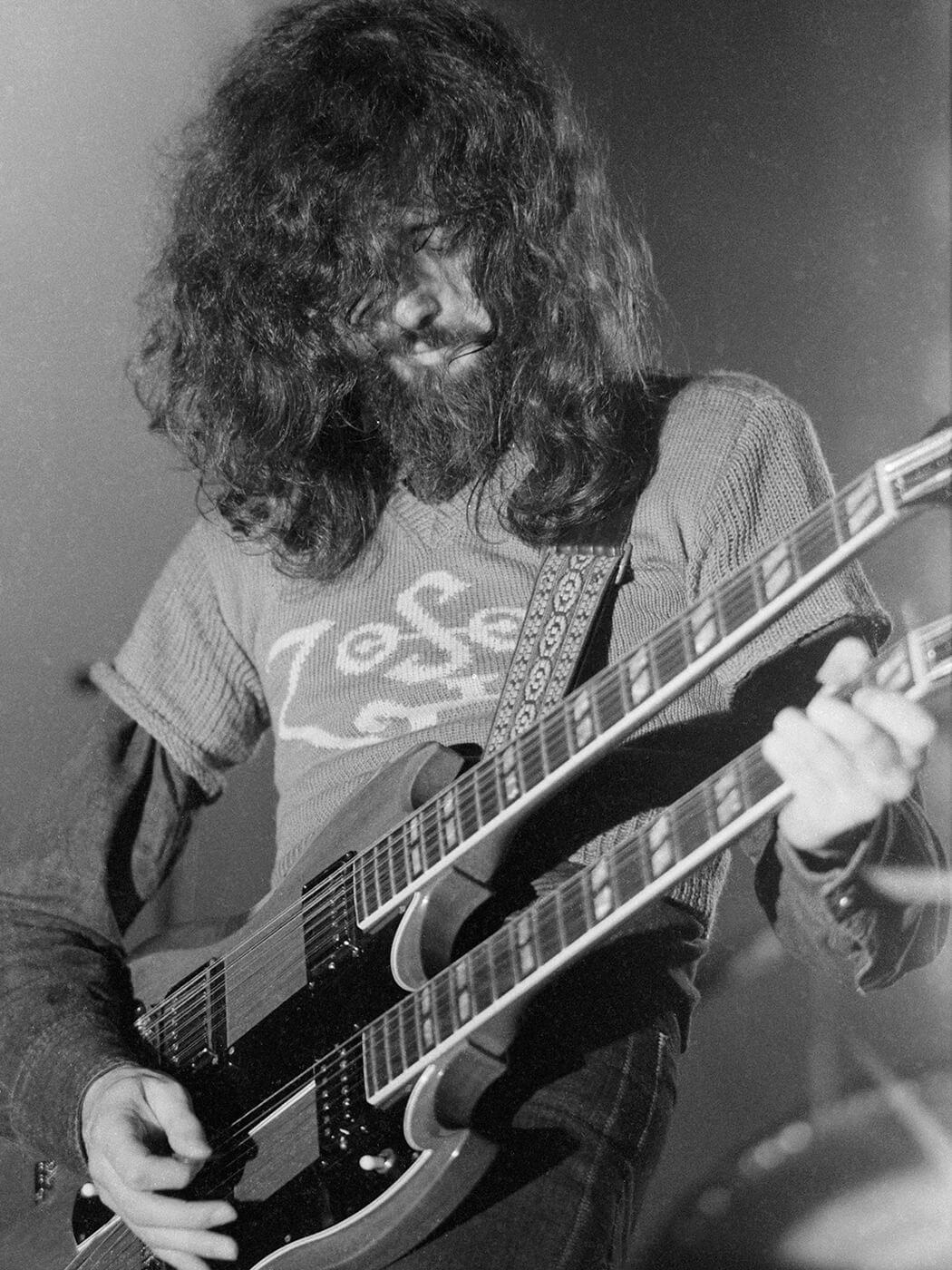
The genesis
Rue des Arcis was just off the Seine on its right bank. It was an ancient street that maintained a certain prestige; in the 14th century, the street housed many clerics of Notre Dame de Paris, as well as a slew of artisans and craftsmen over the centuries. In the mid-1600s, it was home to Nicholas Alexandre Voboam II, or simply Alexandre Voboam, son of famed luthier René Voboam, the architect of one of the most prominent baroque guitars in the French Renaissance.
The Renaissance encouraged all aspects of artistry. Thus, guitars – particularly dazzling and well-constructed guitars like a Voboam – were very popular during this period. René’s practice developed into a family business, with Alexandre and his brother Jean working within the discipline as well. Presently, the intricate design work and durability of Voboam guitars is still illustrious; many Voboams hang in museums around the world today.
As the Renaissance blossomed, the components that constituted its culture, especially music, became more expressive and intricate. Combining two instruments was a way for solo musicians to tackle more complicated compositions without needing to change instruments. Such a motive has clearly withstood the test of time.
Alexandre Voboam is credited with building one of the earliest known true double-neck guitars in existence, perhaps the most notable guitar dating back to 1690, though it’s speculated that he constructed several other double-neck guitars previously. The design was quite simple: Take a finely crafted five double course Voboam guitar (a course is equivalent to a string, a double course is a double string), and attach a smaller five double-course Voboam guitar to its underbelly. The smaller guitar is pitched higher than its host guitar, allowing the player to easily switch between octaves and alternate tunings.
But the concept of multi-neck instruments did not begin with the guitar. Many harps and lyres were constructed with an extra neck and outfitted with either a set of guitar strings or bass strings. Relatively speaking, the double-neck guitar is one of the younger designs regarding multi-neck stringed instruments.

The resurgence
The multi-neck Voboam model persisted for centuries without any significant modifications. It wasn’t until the end of the 19th century when multi-neck manufacturing exploded, as new mechanical processes adopted during the Industrial Revolution monopolised industrial practices in earnest.
In the mid-19th century, the cultural centres of Europe – cities like Milan, Paris, and particularly Vienna – were hotbeds for artistic innovation. Guitar composers began utilising low notes in their compositions that were unreachable by the metrics of the simple five- or six-course guitar. This would lead to several multi-neck modifications, including the Schrammel guitar, a multi-neck contra guitar outfitted with floating bass strings, and a resurgence in multi-neck harp guitars as the sensation of such compositions permeated throughout the continent. The Schrammel guitar is perhaps the earliest known multi-neck bass guitar; it precedes the likes of Geddy Lee’s Rickenbacker 4080/12 and Mike Rutherford’s custom Shergold Modulator by roughly 200 years.
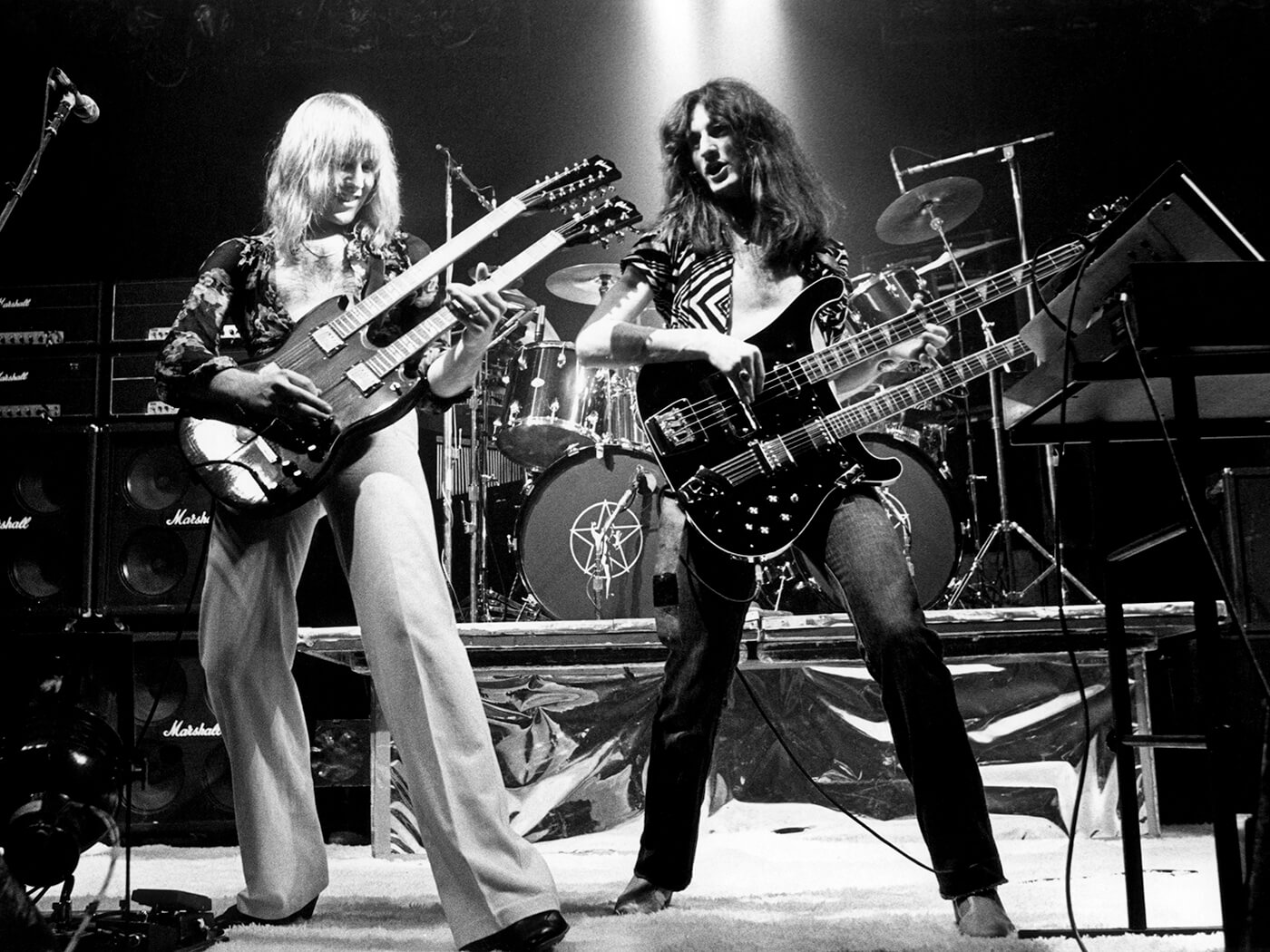
The modernisation
The success of the 19th-century multi-neck harp guitar also worked within the United States market. American folk musicians found the instrument to be quite useful – and later, essential –as the instrument’s naturally loud volume and tuning possibilities proved useful amongst banjos, mandolins and six-course guitars. Soon, multi-neck instruments were modernised and produced in a variety of forms, some outfitted with mandolin and lute parts for a more dynamic range of sound.
At the dawn of the 20th century, jazz, vaudeville and the great American songbook came into form as the country’s popular musical medium, bringing along the lap steel guitar music prominent in Hawaii. As its popularity rose, Gibson developed a double-neck lap steel guitar, allowing the notably rigid instrument an opportunity for diversity. These lap steels were the first electric double-neck guitars available on the market.
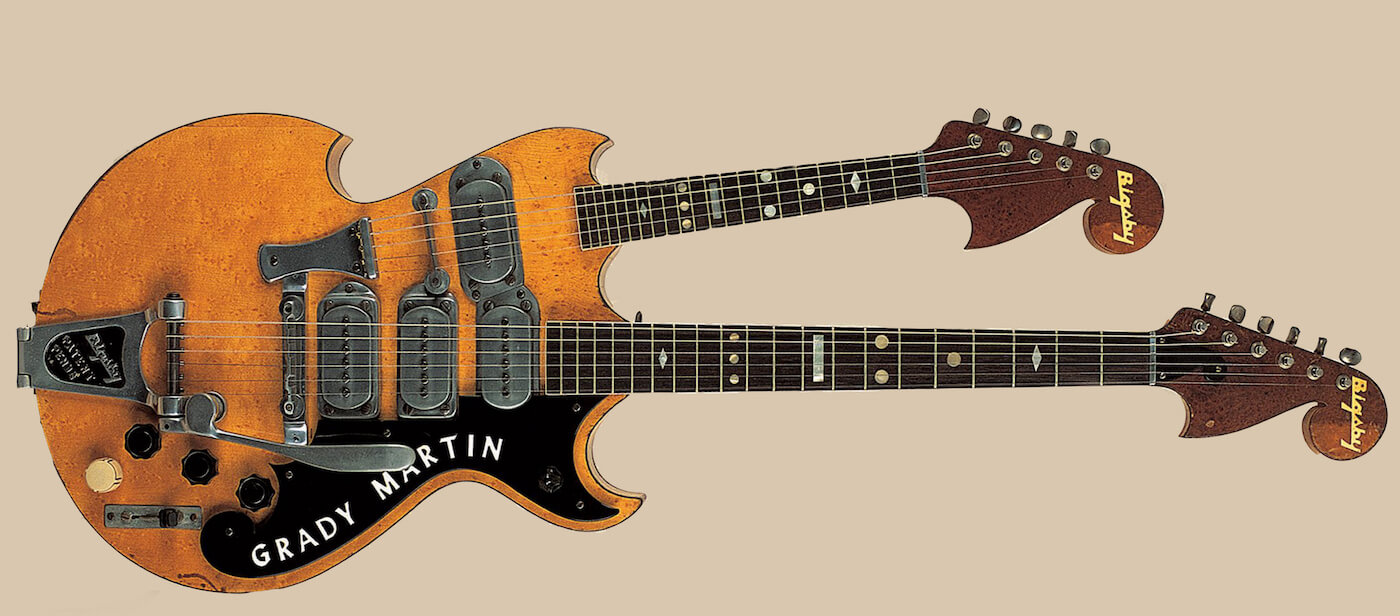
The idiosyncratic sounds of Hawaiian music – playing with a slide, volume swells, melodic double stops – were later borrowed by early country musicians and were pivotal in the development of honky tonk and country blues music. Following the next several decades, as these new styles developed and as American culture shifted (World War II would reposition America’s manufacturing focus from consumers to the military), luthiers Leo Fender and Paul Bigsby were commissioned by various country guitar players to produce various double-neck guitar prototypes for stage performances. Grady Martin’s inimitable double neck built by Bigsby is perhaps the most discernible piece of this step in the multi-neck evolution.
While the multi-neck’s striking appearance has been ubiquitous since its creation, it wasn’t until the instrument’s Americanisation when its appearance became an intentional spectacle. Musicians like Joe Maphis and Johnny Weeks put bodies in theatre seats with their flamboyant axes. Elvis would later sport a Gibson double neck in the mid-60s.
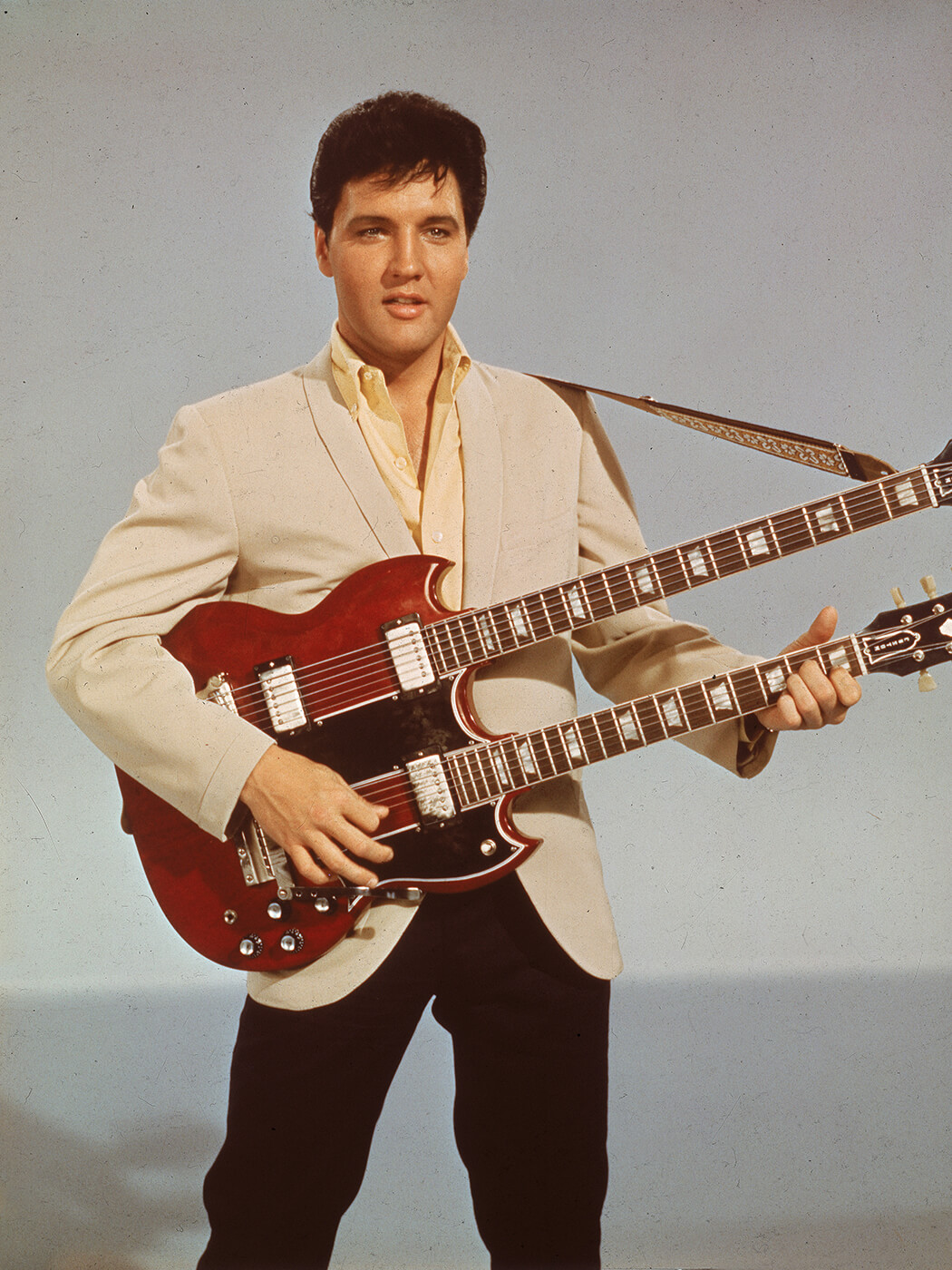
The culmination
Gibson’s initial run of the EDS-1275 6/12 lasted from 1963-1968; John “Charlie” Whitney of the British progressive rock group Family bought one of the new walnut brown models in 1964. Whitney’s continual use of the EDS through the 1960s eventually caught the eye of a young Jimmy Page. When he was later pressed on his inspiration behind buying a custom EDS-1275 6/12 (they had been out of production for several years by then), Page recalled: “I’d seen one in Family. You remember Family? That guy had a double-neck.”
The subsequent success of Led Zeppelin IV combined with the game-changing success of Stairway to Heaven greatly emboldened the image of Page and his trusty EDS-1275 as a centrepiece in rock and roll iconography. The very image of the double-neck guitar came to embody all things rock and roll, the excess and magnetism of it all, the boldness, the unconventionality.
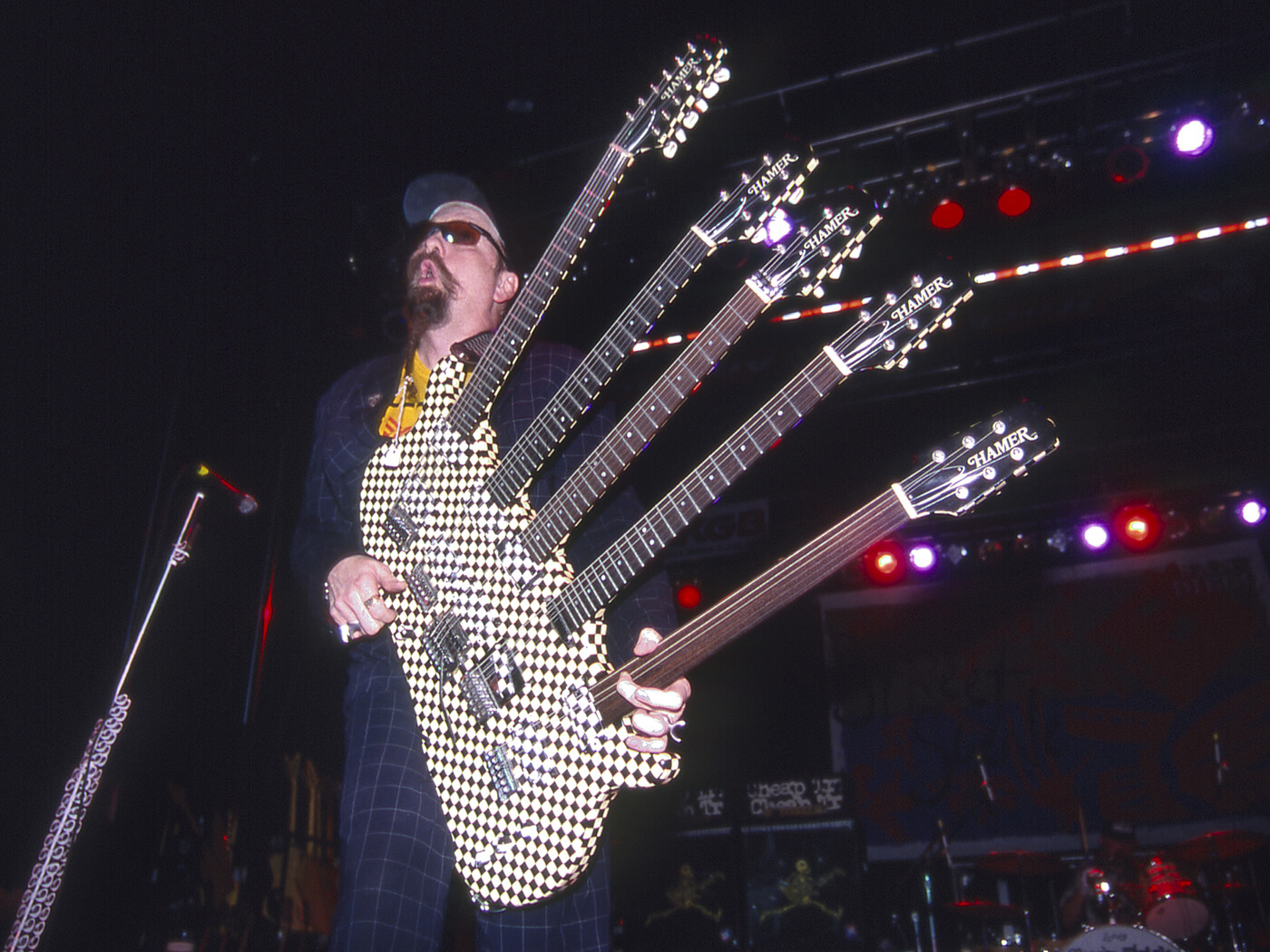
Page would inspire a generation of rock stars to follow suit: Ace Frehley, Alex Lifeson, Don Felder, Steve Miller. Many would take the multi-neck even further, Rick Nielsen’s bombastic custom Hamer five-neck representing the more ostentatious realms of the concept.
After Zeppelin ripped through their debut of Stairway to Heaven at Ulster Hall, Page unstrapped his EDS-1275 and sat down with an acoustic for another debut, Going To California. And while Robert Plant sang of aching love, and Page’s accompaniment ambled along, the mighty Gibson double-neck sat idly by, basking in the admiration of its crowning moment. It took nearly 300 years for the multi-neck to invade the mainstream from the fringe. From that point forward, it was an icon, its journey nothing short of epochal.
For more features, click here.
